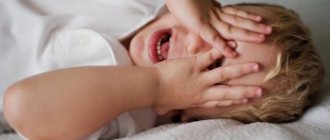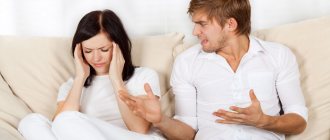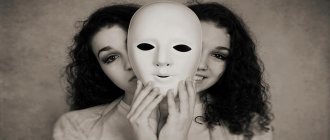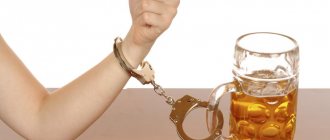Psychoses (psychotic disorders) are understood as the most striking manifestations of mental illnesses, in which the patient’s mental activity does not correspond to the surrounding reality, the reflection of the real world in the mind is sharply distorted, which manifests itself in behavioral disorders, the appearance of abnormal pathological symptoms and syndromes.
In what cases should psychotropic tablets and injections be used?
The modern rhythm of life dictates its own conditions of survival. Chronic overwork, widespread rudeness and rudeness, traffic jams and queues, intense work - all these factors do not leave their mark on the psyche and nervous system. For people with a high degree of psycho-emotional stability, no stress is scary, but even they break down over time. What can we say about patients with a weak and unstable psyche: they often have to literally survive in the urban jungle.
Among people without medical education, there is an opinion that psychotropic drugs should be taken only when a diagnosis has already been made. That is, when we can say with confidence that a sick person has depression, schizophrenia, manic-depressive psychosis and other diseases. This is wrong. If a patient complains of anxiety, tearfulness, sleep problems, or bad mood, this is already a reason to prescribe a course of psychotropics.
It is always easier to prevent the development of a disease than to treat it. Increased suspicion is characteristic of patients at the first stage of paranoid schizophrenia, frequent bad mood - at the initial stage of chronic depression, headache and insomnia can serve as a harbinger of psychosis. So should we wait? Isn’t it easier to turn to a psychiatrist in time for a prescription for the drug and start living fully and happily?
Class of psychotropic drugs: neuroleptics
These are the same terrible antipsychotic drugs that gained notoriety among the people thanks to the works of fiction “One Flew Over the Cuckoo’s Nest”, “The Green Mile” and many others. Neuroleptics seem to embody all the dangers of psychotropics: they turn a person into a vegetable and make him mentally retarded.
This opinion, of course, is completely unprofessional and does not correspond to reality.
Tens of thousands of people around the world owe their lives to the action of neuroleptics. In some cases (with schizophrenia of various origins, withdrawal syndrome, paranoid psychosis, etc.), only these pills for mental disorders can help the patient.
Neuroleptics effectively reduce psychomotor agitation and motor restlessness. Effective for psychoses of any etiology. Depending on the degree of neuroleptic action and composition, several classes of antipsychotic drugs for mental disorders are distinguished:
- xanthenes and thioxanthenes (“Clopenthixol”, “Flupentixol”);
- butyrophenones (“Haloperidol”);
- cyclic derivatives (“Rispolept”);
- benzamide derivatives (“Sulpiride”, “Metoclopramide”);
- phenothiazines (“Promazine”, “Thioproperazine”, “Trifluperazine”, “Pericyazine”).
Taking most antipsychotics is most often accompanied by the following side effects:
- drowsiness;
- slowness;
- “state of a vegetable”;
- apathy;
- in some cases - anxiety, hypochondria.
If such symptoms develop, it is necessary to reduce the dose or change the drug to another.
Basic principles of therapy
In psychiatry, schizophrenia is understood as a group of mental disorders characterized by disturbances in the emotional and mental sphere. Complete recovery is impossible, however, with the help of proper therapy, the symptoms of the pathology are eliminated and its recurrence is prevented in the future. This improves the patient’s social adaptation and ability to work.
Stages of therapy:
- Treatment in the acute period to eliminate symptoms of psychosis. The drugs used suppress delusions, hallucinations, catatonia and other positive symptoms.
- Stabilizing therapy consolidates the effect of the previous stage, eliminating remaining symptoms.
- Maintenance treatment is aimed at maintaining a stable state of the patient’s mental sphere and preventing the development of relapses.
Treatment in the acute period should be prescribed at the first manifestation of symptoms. This is due to the fact that when an attack lasts for a long time, stopping it requires large doses of medications and the use of combinations of psychoactive drugs. This may cause side effects.
The first stage of therapy against the background of acute psychosis is carried out during hospitalization of the patient. Subsequent stabilizing and maintenance therapy can be carried out on an outpatient basis. It is important to note that, despite the disappearance of symptoms with maintenance treatment, the patient should be under the supervision of a psychiatrist for the timely identification of precursors of exacerbation.
List of modern antipsychotic drugs
The following drugs have the most striking antipsychotic effect:
- “Sulpiride” (instructions for use, price and reviews are described below);
- "Haloperidol";
- "Aminazine";
- "Sonapax" and "Rispolept" are mild antipsychotics that are prescribed even to children.
These drugs can be used both to treat patients in remission and during exacerbation of a psychotic state.
- "Aminazine." The active ingredient is chlorpromazine hydrochloride, available in the form of an injection solution. Prescribed for acute alcoholic psychoses, psychomotor agitation, and insomnia.
- "Sulpiride". Instructions for use, reviews and price of the drug are of interest to many. This is a tablet and injectable antipsychotic. It has a pronounced antipsychotic effect, antidepressant and mild tranquilizing effect. Reviews about the drug confirm that the drug acts quite mildly and is a modern analogue of Aminazin. The price of the medicine varies between 50-100 rubles.
- Haloperidol is an antipsychotic that is actively used in psychiatry for the treatment of acute psychotic conditions. Used back in the Soviet years. Indications for the use of Haloperidol: schizophrenia, delirium, psychoses of various etiologies. The drug causes many side effects. It is analogous to Aminazin in action. At the same time, it has even more side effects. Despite the impressive list of indications for use, Haloperidol is ignored by many psychiatrists. It is still often prescribed to patients by doctors who practiced back in the Soviet years - then this drug was almost the only one for relieving acute psychotic conditions.
- "Sonapax" is a new generation antipsychotic, released in tablet form. If “Haloperidol” and “Aminazine” (the indications for use of which are the same as for all other antipsychotics) cannot be purchased at the pharmacy by the average person, then “Sonapax” can be purchased without even having a prescription from a doctor. Has a very mild antipsychotic effect.
Treatment of productive symptoms
The main group of psychotropic drugs for the elimination of hallucinations, delusions and other productive symptoms in schizophrenia are antipsychotics (neuroleptics). These medications have been used in psychiatry for 50 years and show good results. All antipsychotics are usually divided into two large groups: typical and atypical. They differ from each other in the severity of the effect and the risk of side effects. Typical antipsychotics (Aminazine, Haloperidol) can lead to the development of extrapyramidal disorders such as dystonia and parkinsonism, as well as other neurological symptoms and depression. Atypical antipsychotics (Risperidone, Clozapine, Amisulpride, etc.) have a higher level of safety for patients.
Typical antipsychotics Haloperidol and Aminazine
The main indications for the use of antipsychotics are productive symptoms in the form of delusions, hallucinations, illusions, behavioral disorders and mania. The drugs suppress these symptoms and promote clinical remission of schizophrenia. The following medications are most often used in therapy:
- drugs Risperidone and Amsulpride for patients who have signs of both productive symptoms and negative ones in the form of autism, depression, etc. (they allow you to increase the activity of certain areas of the brain, eliminating these manifestations);
- a universal drug - Olanzapine, which quickly relieves psychosis and is approved for use for most patients;
- when psychosis is accompanied by increased excitability and severe psychomotor agitation, it is recommended to use Quetiapine;
- catatonic and hebephrenic forms of schizophrenia require the appointment of Mazeptil, which eliminates motor disorders.
In severe forms of the disease, for example, with catatonic manifestations or prolonged psychosis, preference is given to classical antipsychotics, for example, Haloperidol. It effectively eliminates symptoms, however, it can lead to neurological disorders of an extrapyramidal nature. To prevent them, Cyclodol is used together with Haloperidol. New generation medications for schizophrenia combine the positive properties of both typical and atypical antipsychotics. These include Piportil and Clozapine.
Neuroleptics are used in standard dosages for 1-2 months. After relief of acute psychosis and stabilization of the patient’s condition, the patient is transferred to stabilizing therapy using lower doses of drugs or replacing them with “milder” ones.
If prescribed incorrectly, antipsychotics can lead to the following side effects:
- Drowsiness due to sedation. A similar effect can occur with the use of Clozapine, Olanzapine and Quetiapine.
- Extrapyramidal disorders in the form of akathisia and other types of disorders. Akathisia is manifested by a subjective desire to change position and a feeling of severe anxiety. Dystonia and parkinsonian symptoms are rare with the use of atypical antipsychotics.
- Taking Amisulpride or Risperidone tablets leads to an increase in prolactin levels. Other atypical antipsychotics also cause temporary hyperprolactinemia, however, its severity is less severe. A high level of prolactin in the blood affects the production of sex hormones in the body and can cause the development of pathological changes in the mammary glands and endometrium.
- Patients who use drugs for a long time increase the risk of developing obesity and associated negative consequences.
To prevent the development of side effects, the patient should be examined for existing contraindications before starting therapy. If adverse reactions occur during treatment, the medication used is changed to an analogue, preferably from a different pharmacological group.
Tranquilizers and their principle of action
These drugs for the treatment of mental illness are prescribed for anxiety and depressive disorders, hypochondria, obsessive phobias and sleep problems.
What is the tranquilizing effect? This is an action in which the patient becomes calm, confident in himself and his actions. He is no longer bothered by obsessive thoughts and fears.
The disadvantage of tranquilizers is that many of them make a person sleepy and inactive. The patient gains excess weight and loses interest in life. There are new generation tranquilizers that have a minimum of side effects and contraindications - they help get rid of fears and anxieties, but do not turn the patient into a “vegetable”.
Tablets for mental disorders with a tranquilizing effect are divided into several categories. This:
- benzodiazepines;
- triazolobenzodiazepines;
- heterocyclic derivatives;
- diphenylmethane derivatives;
- heterocyclic.
Electroconvulsive therapy
The basis is the induction of convulsive seizures due to the action of electric current, affecting the subcortical structures of the brain and the metabolism of the nervous system.
The success of therapy largely depends on the time at which treatment measures begin: the earlier treatment begins, the higher the likelihood of curing a mental disorder and preventing negative consequences for the individual.
List of tablets for mental disorders with tranquilizing effects
Among these medications, we can highlight the following drugs for which psychiatrists most actively prescribe to their patients:
- "Atarax" is a tranquilizer produced in the form of tablets. The main active ingredient is hydroxyzine hydrochloride. Has a sedative effect, eliminates phobias and anxiety. Used as mental health pills for teenagers and adults. Effective for relieving anxiety, motor restlessness, psychomotor agitation, feelings of internal tension, increased irritability in neurological, psychosomatic diseases, acute hangover and withdrawal symptoms in people with chronic alcohol dependence (indications for the use of Aminazin are similar).
- "Adaptol" is a tranquilizer produced in the form of tablets. The main active ingredient is mebicar. Effective for fears and phobias in children and adults. It can be used both independently and as an adjuvant in the treatment of diseases accompanied by psychomotor agitation, a feeling of internal tension, irritability, and adaptation disorders.
Treatment of emotional disorders
A large number of patients with productive symptoms have an emotional component in the form of anxiety, aggression and other manifestations. To eliminate it, psychoactive drugs are selected that relieve emotional disorders:
- with severe manic agitation, a therapeutic effect is observed when using Quetiapine in standard dosages;
- Clopixol is used in patients with psychomotor agitation, anger and aggression; the drug is especially often used to treat patients with schizophrenia with withdrawal syndrome associated with refusal to take alcoholic beverages or drugs (there is a prolonged form of the drug - Clopixol-Acupaz, which allows you to take the medication less frequently) .
Psychoactive drugs Quetiapine and Clopixol
If atypical antipsychotics are ineffective during the first days of therapy, the psychiatrist transfers the patient to typical antipsychotics with a sedative effect. Their use lasts 10-14 days, during which psychomotor agitation disappears and the patient’s condition returns to normal. The main typical antipsychotics that exhibit a sedative effect are the following:
- Aminazine - used for psychoses accompanied by anger and aggression;
- if the symptoms of anxiety and restlessness predominate, it is recommended to prescribe Tizercin;
- Elderly patients, as well as patients with renal or liver failure, are prescribed Melperon and Chlorprothixene (these drugs do not affect the functioning of these organs and rarely lead to the development of side effects).
In addition to antipsychotics, antidepressants and mood stabilizers are prescribed to eliminate emotional disorders. Antidepressants normalize mood levels and reduce anxiety and restlessness in patients with schizophrenia. It is recommended to use selective serotonin reuptake inhibitors - Fluoxetine, Escitalopram and Zimelidine. Mood stabilizers, for example, lithium salts, reduce anxiety. These groups of drugs are used in the acute period of schizophrenia and during anti-relapse treatment.
Elimination of the depressive component
The main group of drugs to eliminate the depressive component are antidepressants. Preference is given to Fluoxetine and its analogues: Escitalopram and Venlafaxine. The latter medicine is recommended for use by patients who, in addition to depression, have increased levels of anxiety and restlessness. New drug trials show that the drug Ixel can eliminate depression with melancholy symptoms that create the preconditions for suicidal thoughts.
The use of heterocyclic antidepressants is limited due to low effectiveness and a high risk of side effects. Among them, Amitriptyline, Melipramine or Clomipramine are used as second-line therapy.
Treatment of the manic component
For severe mania, a combination of atypical antipsychotics and mood stabilizers is prescribed. It is recommended to continue such therapy during anti-relapse treatment, since schizophrenia is characterized by exacerbations of emotional disorders. The main sedative tablets are mood stabilizers Depakin and Valprocon. For mild mania, Lamotrigine is used, which has a weaker effect, but less often leads to side effects.
Lithium salts are considered universal drugs for eliminating the manic component of schizophrenia. Their use with typical antipsychotics is prohibited, as this may lead to adverse drug reactions due to interactions between the two groups of medications.
If psychosis is not relieved with the help of the specified list of drugs from the group of atypical and typical antipsychotics, then electroconvulsive therapy, insulin shock and other therapeutic approaches are possible.
Myths about antidepressants
Antidepressants are probably the most extensive class of pills for mental disorders. Almost every person has heard about these “medicines for bad mood”. And many have tested their effects on themselves. Hundreds of thousands of people around the world, thanks to the action of antidepressant tablets, were able to enjoy every day of their lives and overcome eternal apathy, fatigue and reluctance to exist.
Unfortunately, there are a lot of rumors about these drugs. That antidepressants are addictive, that they provoke cancer, that after a course patients commit suicide. All these speculations are most often based on nothing.
Yes, the instructions for use for many antidepressants actually indicate thoughts of suicide in the contraindications column. That is, if the patient has already had such thoughts, then taking pills can reinforce the thought that such a decision is true.
That is why unauthorized use of antidepressants is unacceptable. Taking these pills for mental disorders can only be done under the supervision of an experienced psychiatrist. These pills will not be sold in pharmacies without a prescription.
Indications for the use of antidepressants:
- depression of various origins;
- obsessive-compulsive disorders;
- anxiety disorders;
- some obsessive states;
- bulimia
Antidepressants: list of the safest and most effective drugs
Psychotropic drugs that have an antidepressant effect can be divided into several groups:
- tricyclics (“Amitriptyline”, “Imipramine”, “Clomipramine”, “Tianeptine”);
- tetracyclic (“Mianserin”, “Maprotiline”);
- serotonergic (“Citalopram”, “Sertraline”, “Prozac”, “Fluoxetine”);
- MAO inhibitors (Moclobenide);
- specific serotonergic (“Milnacipran”).
The most prescribed and relatively safe (with a minimal list of side effects and contraindications) are the following antidepressants:
- “Fluoxetine” has a mild stimulating effect, reduces appetite, increases resistance to life’s adversities, and improves psycho-emotional state.
- Zoloft has a sedative effect, but at the beginning of use it has a stimulating effect on many patients. Compared to Fluoxetine, it is rather calming (the action sometimes resembles Aminazine, the instructions for use confirm this). When taking Zoloft, patient monitoring is necessary, since the drug has a rather different effect on each person.
- "Stimuloton" has a mild stimulating effect, while being able to have an anti-anxiety effect and soften the severity of phobias and paranoia.
Tablets for stabilizing treatment
Stabilizing therapy is aimed at completely eliminating the productive symptoms of schizophrenia, as well as emotional disorders. The duration of treatment is 3-10 months, depending on the course of the disease in a particular patient. To stabilize the condition, atypical antipsychotics are used: Amisulpride, Quetiapine and Risperidone. They are used in smaller dosages than when eliminating acute psychosis. The drugs help eliminate apathy, speech disorders and changes in the emotional-volitional sphere.
Atypical antipsychotics Risperidone and Amisulpride
Psychiatrists distinguish long-acting forms of atypical antipsychotics, which are more convenient to use than their classical analogues: Fluanxol-Depot, Rispolent-Konsta and Klopiksol-Depot. The medications do not require frequent administration, which increases patient adherence to therapy and reduces the risk of missing pills. Fluanskol-Depot is recommended for patients with increased anxiety and various phobias. Rispolent-Konsta is used in patients who have residual productive effects in the form of hallucinations or delusions.
Typical antipsychotics are rarely used due to their pronounced effect and the risk of side effects. If atypical antipsychotics are not effective, Haloperidol, Triftazin, Montiden-Depot or Piportil are used. The latter is recommended for signs of catatonia or paranoid schizophrenia. The long-acting drug Montiden-Depot eliminates residual hallucinations and delusions.
The principle of action of nootropics on the psyche
Nootropics are the most harmless class of psychotropic drugs. Many of them can be purchased at a pharmacy even without a prescription from a psychiatrist.
Nootropics have a positive effect on cognitive functions. Capable of stimulating learning and memory processes, increasing the brain’s resistance to various adverse factors (in particular, hypoxia) and extreme stress.
However, they do not have a direct stimulating effect on mental activity. In rare cases, during nootropic therapy, the patient develops causeless anxiety and sleep disorders.
List of the most effective nootropics
Tablets with nootropic effects, which are prescribed to adults, children and adolescents to stimulate cerebral circulation and improve cognitive function:
- pyrrolidone derivatives (Piracetam, Phezam);
- cyclic derivatives, GABA (“Pantogam”, “Phenibut”, Aminalon”);
- acetylcholine precursors (“Deanol”);
- pyridoxine derivatives (“Pyritinol”, “Riridoxine”);
- drugs with neuropeptide action (“Vasopressin”, “Thyroliberin”, “Cholecystokinin”);
- antioxidants (Mexidol).
Almost any of these drugs can be purchased at any pharmacy without a prescription, since they are not included in the list of potent drugs.
Many of the above drugs are used in the treatment of children with mental retardation, with moderately severe delay in psycho-speech development. Psychiatrists often prescribe nootropics for suspected early childhood autism and manifestations of schizophrenia in children and adolescents. If therapy with nootropics alone does not produce an effect, drugs with neuroleptic or tranquilizing effects are added to the treatment.
Many nootropics have proven to be effective in preventing the progression of senile dementia.
Nootropics can effectively counter the development of toxic encephalopathy in drug addicts and people with alcohol addiction.
You should be extremely careful when taking it without authorization: nootropics have quite a few contraindications and in some cases can provoke acute psychotic states (if the patient is predisposed to this). In this case, emergency assistance for mental disorders will be required to relieve psychosis.
New pills
Psychoactive drugs have been used in psychiatry for more than 50 years. During this time, several hundred different substances were created that were used to treat schizophrenia and other mental disorders. The main group of drugs are atypical or conventional neuroleptics (Haloperidol, Aminazine, etc.), leading to various side effects of the tablets. Most often, when using these drugs, patients experience extrapyramidal disorders, endocrine system disorders, depression and allergic reactions. The newest drugs for the treatment of schizophrenia, namely atypical antipsychotics, maintain a high level of effectiveness while significantly increasing the level of safety for the patient.
Risperidone and other atypical medications have a complex effect on the brain, regulating the level of neurotransmitters and the activity of its individual areas. This allows not only to ensure the elimination of productive symptoms, but also to improve cognitive functions and reduce the severity of emotional-volitional disorders in the form of depression, mania, apathy, etc. New antipsychotics include Quetiapine, Aripiprazole, Ziprasidone, Sertindole and Olanzapine.
Use of stimulants in psychiatry and consequences
Psychostimulants are antagonists of neuroleptics. If neuroleptic drugs, roughly speaking, contribute to the appearance of a “vegetable” state in the patient, then stimulants make a person unnaturally cheerful. He doesn’t feel like eating, sleeping, resting, he can concentrate. But there is a constant desire to move, dance, and play sports.
Side effects when using psychostimulants:
- tremor;
- euphoria;
- insomnia;
- unmotivated aggression;
- headache;
- signs of psychomotor agitation;
- hyperhidrosis;
- dry mucous membranes;
- anorexia.
List of prescription psychostimulants:
- phenylethylamine derivatives (“Sibutramine”, “Methamphetamine”);
- sydnonimine derivatives (“Sidnocarb”);
- heterocyclic (Ritalin);
- purine derivatives (“Caffeine”).
In some cases, psychostimulants can cause physical and psychological addiction to use. This is one of the few classes of psychotropic substances to which addiction can actually develop.
Without a stamped prescription from a doctor, it is impossible to purchase any of the psychostimulant drugs at the pharmacy.
The use of mood stabilizers in psychiatric practice
Normotimics include drugs that regulate affective manifestations and have a preventive effect in affective psychoses that occur in phases. Some of the drugs in this class have anticonvulsant properties, which makes their use advisable for epilepsy and other diseases accompanied by seizures.
Normotimics can be divided into two classes:
- metal salts (lithium carbonate);
- combined group (“Carbamazepine”, “Valpromide”, “Sodium Valproate”).
Preparations based on lithium salts are effective for depression of various origins, anxiety and paranoid disorders. They have quite a lot of side effects: most often they are tremors, the development of paroxysmal pain in the abdominal area, impaired urine outflow, and can provoke the development of sexual dysfunction in men.
It is prohibited to combine the use of drugs based on lithium salts with alcoholic beverages and alcohol tinctures (Corvalol, Valoserdin).










